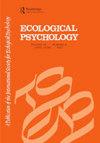人类两腿跳跃步态的里程计:步态对称理论的检验
IF 1.7
3区 心理学
Q3 PSYCHOLOGY, EXPERIMENTAL
引用次数: 7
摘要
摘要:生物里程学是指在运动过程中感知测量距离的能力。在触觉里程计的情况下,关于所走过的距离的信息是由腿的运动产生的,腿的协调运动(即步态模式)产生由触觉感知系统检测到的组织变形模式。触觉里程计的步态对称性理论基于肌肉激活模式的对称性对步态进行分类。这种分类确定了触觉里程计的候选高阶变量,并为理解触觉感知系统检测到的组织变形的相关模式提供了有希望的基础。该理论成功地预测了偏差(即,低估/高估),这是由于在归航任务的出站和返回阶段使用的步态模式的操纵造成的。我们通过考虑先前未检验的关键预测来测试步态对称理论。两腿跳跃和步行具有相同的对称群分类,因此,使用任何两腿跳跃和步行组合作为出站/返回步态完成的归巢任务应该不会产生系统偏差。与这一预测相反,我们观察到系统性偏差。我们讨论了修改步态对称理论的可能性,以解释我们的发现,我们提出了一个基于空间参考框架的新的替代理论。本文章由计算机程序翻译,如有差异,请以英文原文为准。
Human Odometry with a Two-Legged Hopping Gait: A Test of the Gait Symmetry Theory
Abstract Biological odometry refers to the capacity for perceptually measuring distances traveled during locomotion. In the case of haptic odometry, information about distance traversed is generated from the movements of the legs, with coordinated leg motions (i.e., gait patterns) producing patterns of tissue deformation detectable by the haptic perceptual system. The gait symmetry theory of haptic odometry classifies gaits based upon the symmetry of muscle activation patterns. This classification identifies candidate higher-order variables of haptic odometry and provides a promising basis for understanding the associated patterns of tissue deformation detected by the haptic perceptual system. The theory successfully predicts biases (i.e., underestimations/overestimations) resulting from the manipulation of the gait patterns used in the outbound and return phases of homing tasks. We test gait symmetry theory by considering a previously unexamined key prediction. Two-legged hopping and walking have the same symmetry group classification, therefore, a homing task completed using any combination of two-legged hopping and walking as the outbound/return gaits should produce no systematic biases. Contrary to this prediction we observed systematic biases. We discuss the possibilities for modifying gait symmetry theory to account for our findings, and we present a new alternative theory based upon spatial reference frames.
求助全文
通过发布文献求助,成功后即可免费获取论文全文。
去求助
来源期刊

Ecological Psychology
PSYCHOLOGY, EXPERIMENTAL-
CiteScore
3.30
自引率
10.50%
发文量
8
期刊介绍:
This unique journal publishes original articles that contribute to the understanding of psychological and behavioral processes as they occur within the ecological constraints of animal-environment systems. It focuses on problems of perception, action, cognition, communication, learning, development, and evolution in all species, to the extent that those problems derive from a consideration of whole animal-environment systems, rather than animals or their environments in isolation from each other. Significant contributions may come from such diverse fields as human experimental psychology, developmental/social psychology, animal behavior, human factors, fine arts, communication, computer science, philosophy, physical education and therapy, speech and hearing, and vision research.
 求助内容:
求助内容: 应助结果提醒方式:
应助结果提醒方式:


